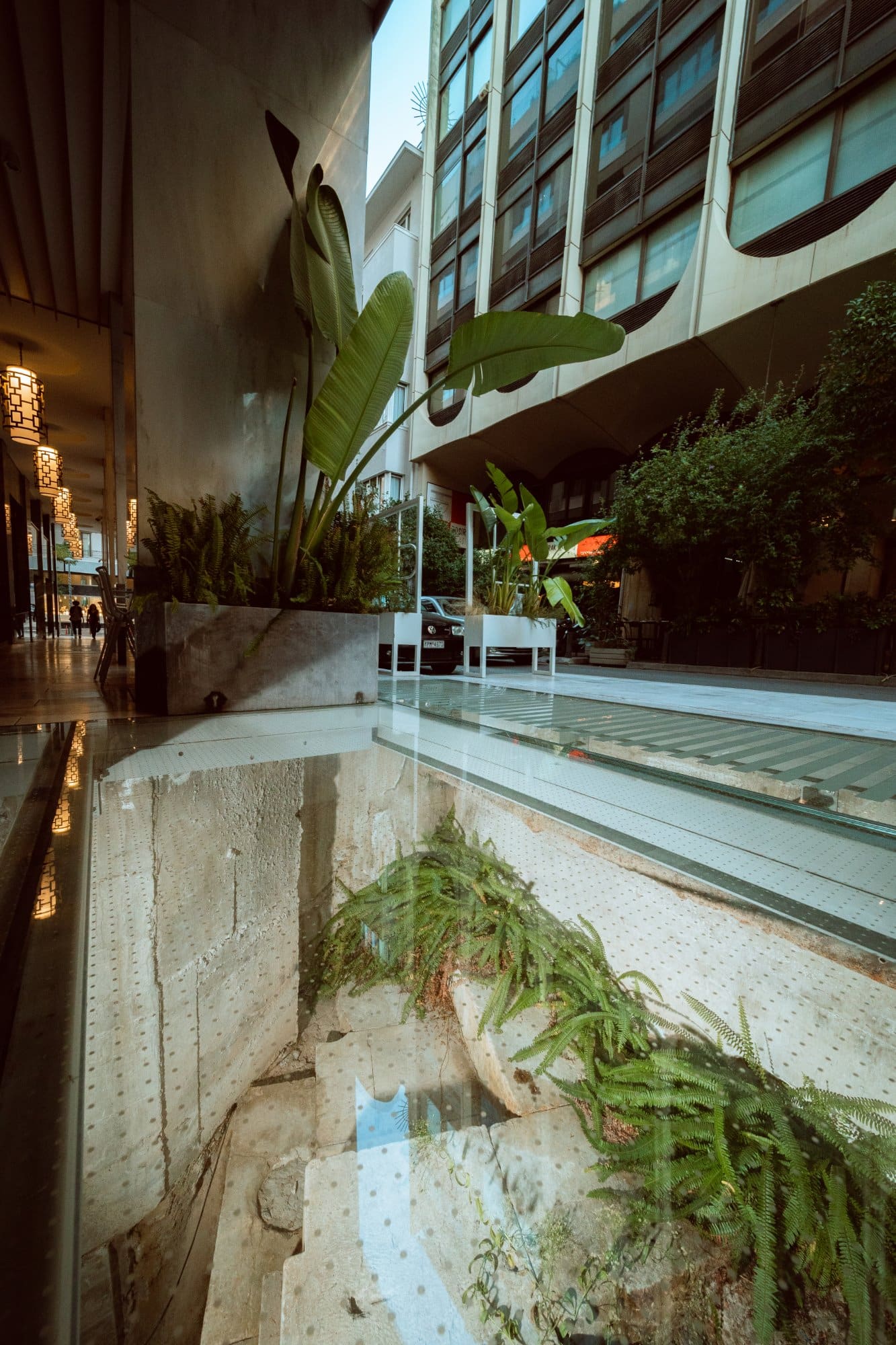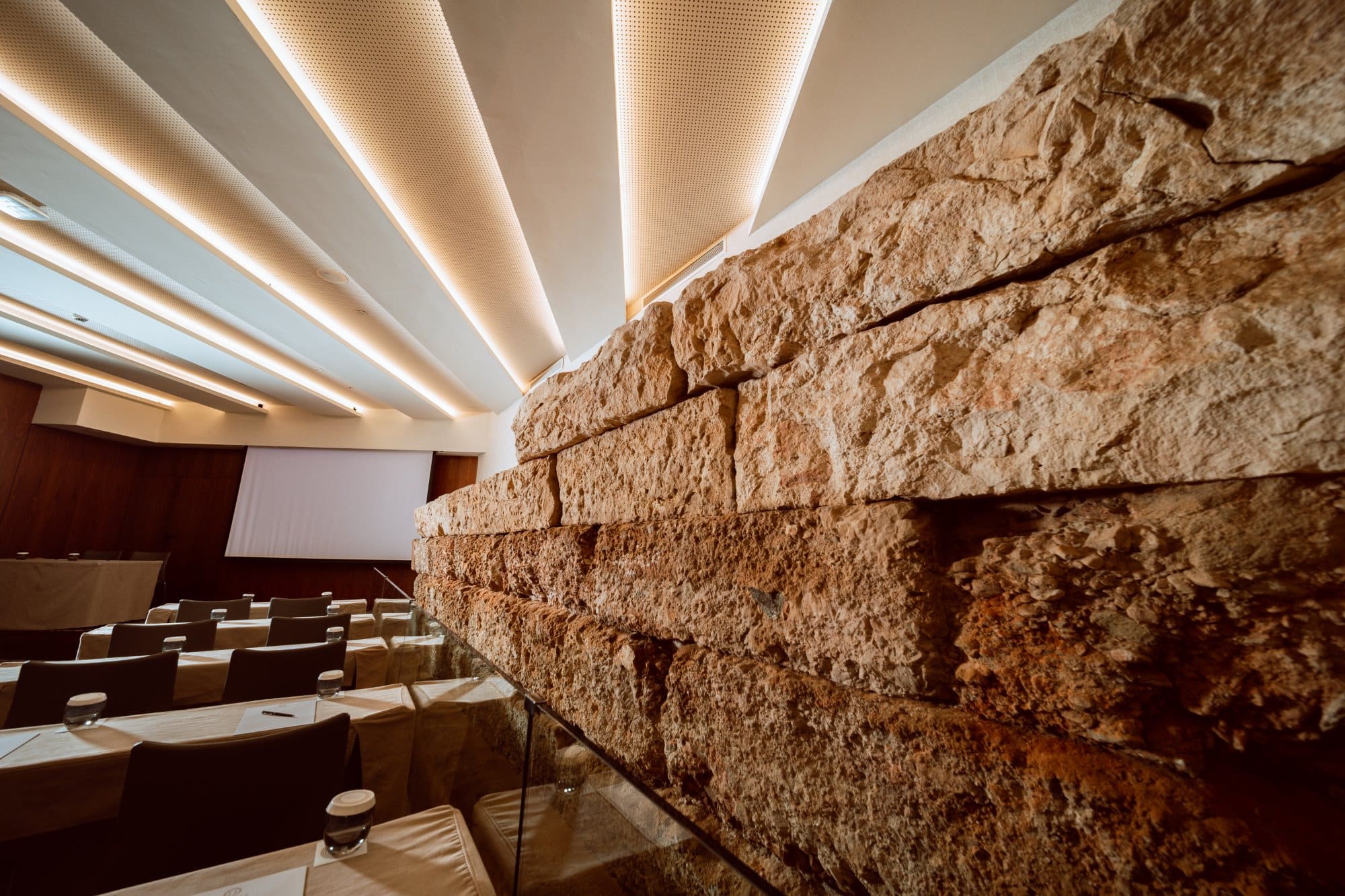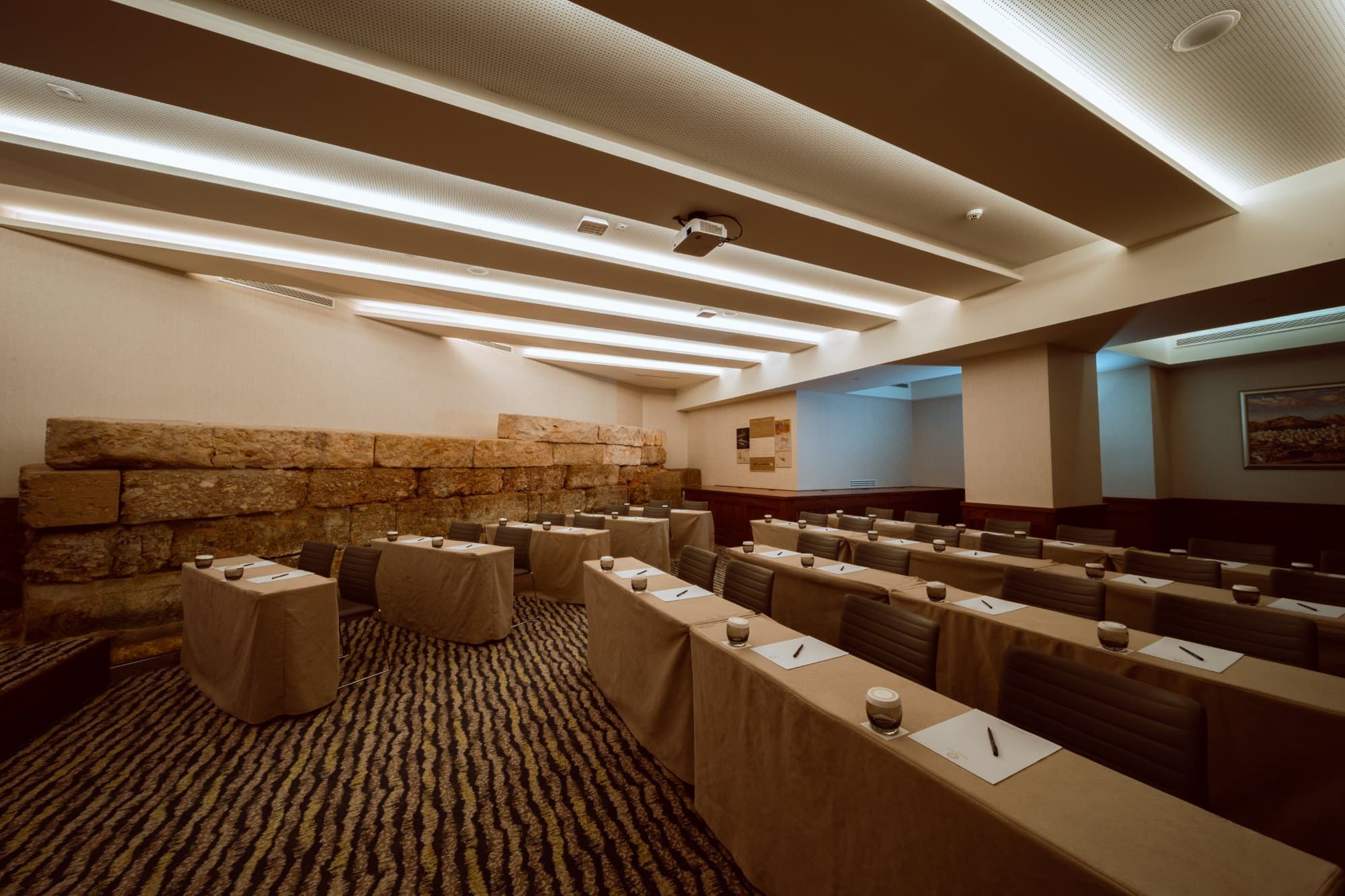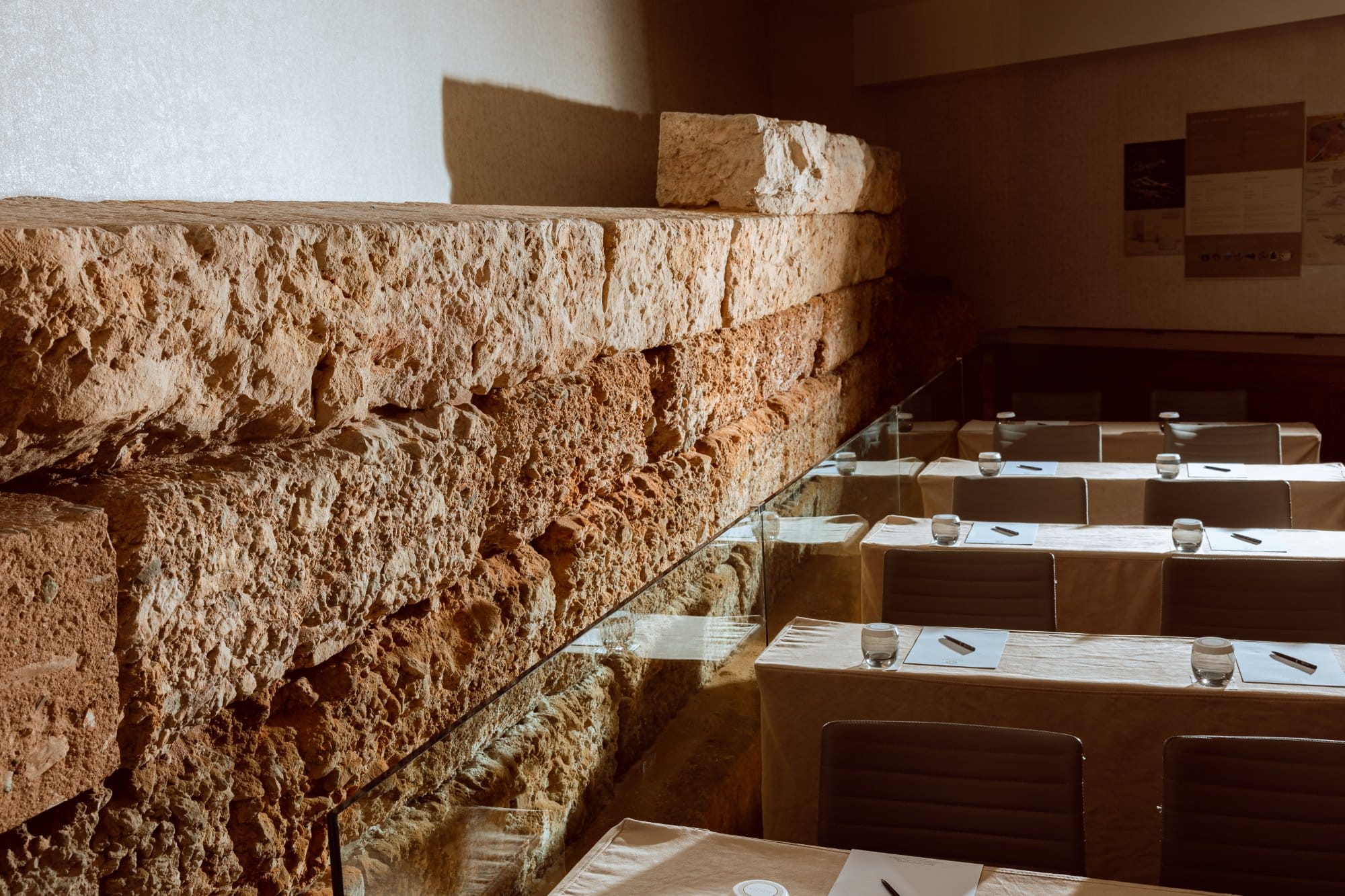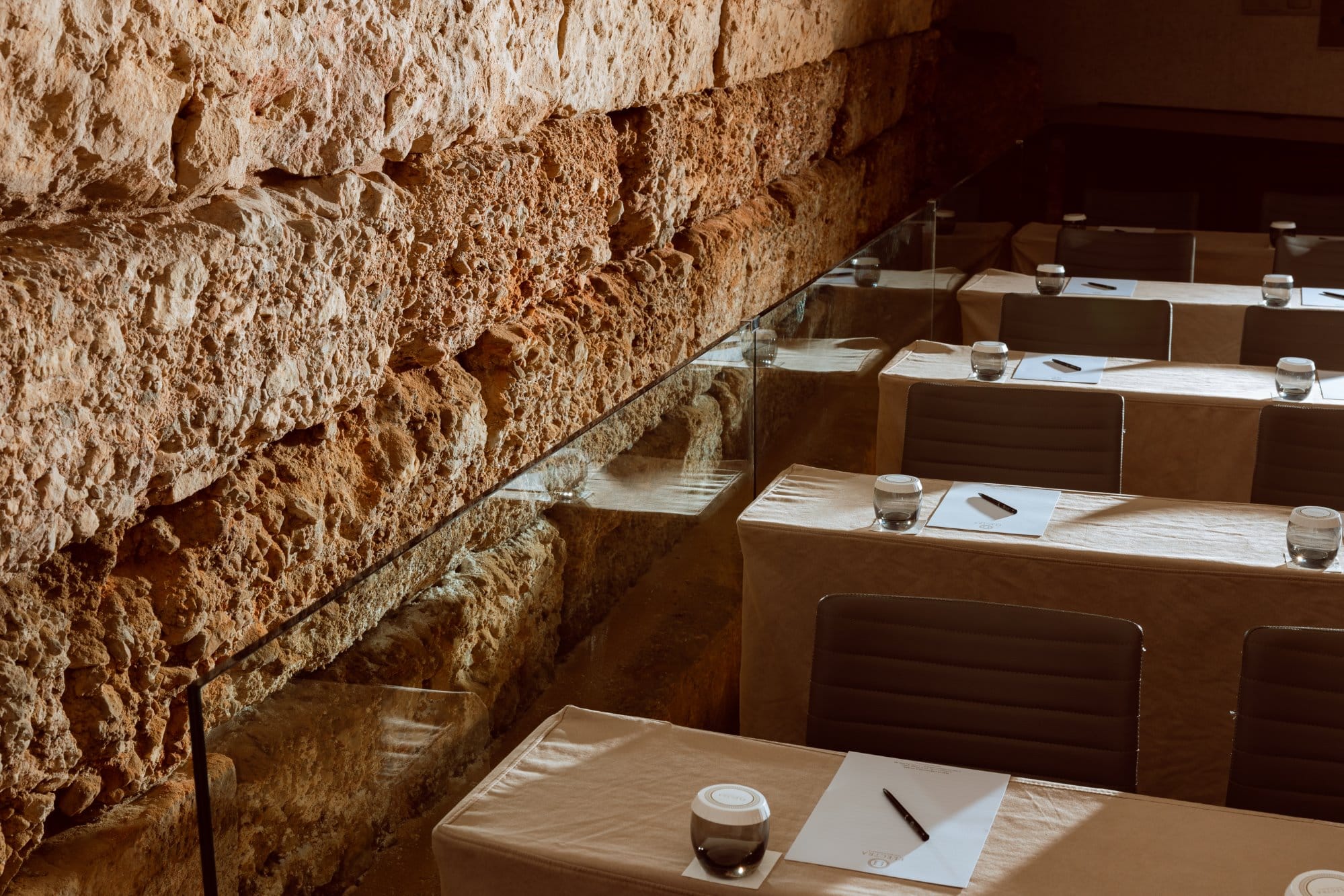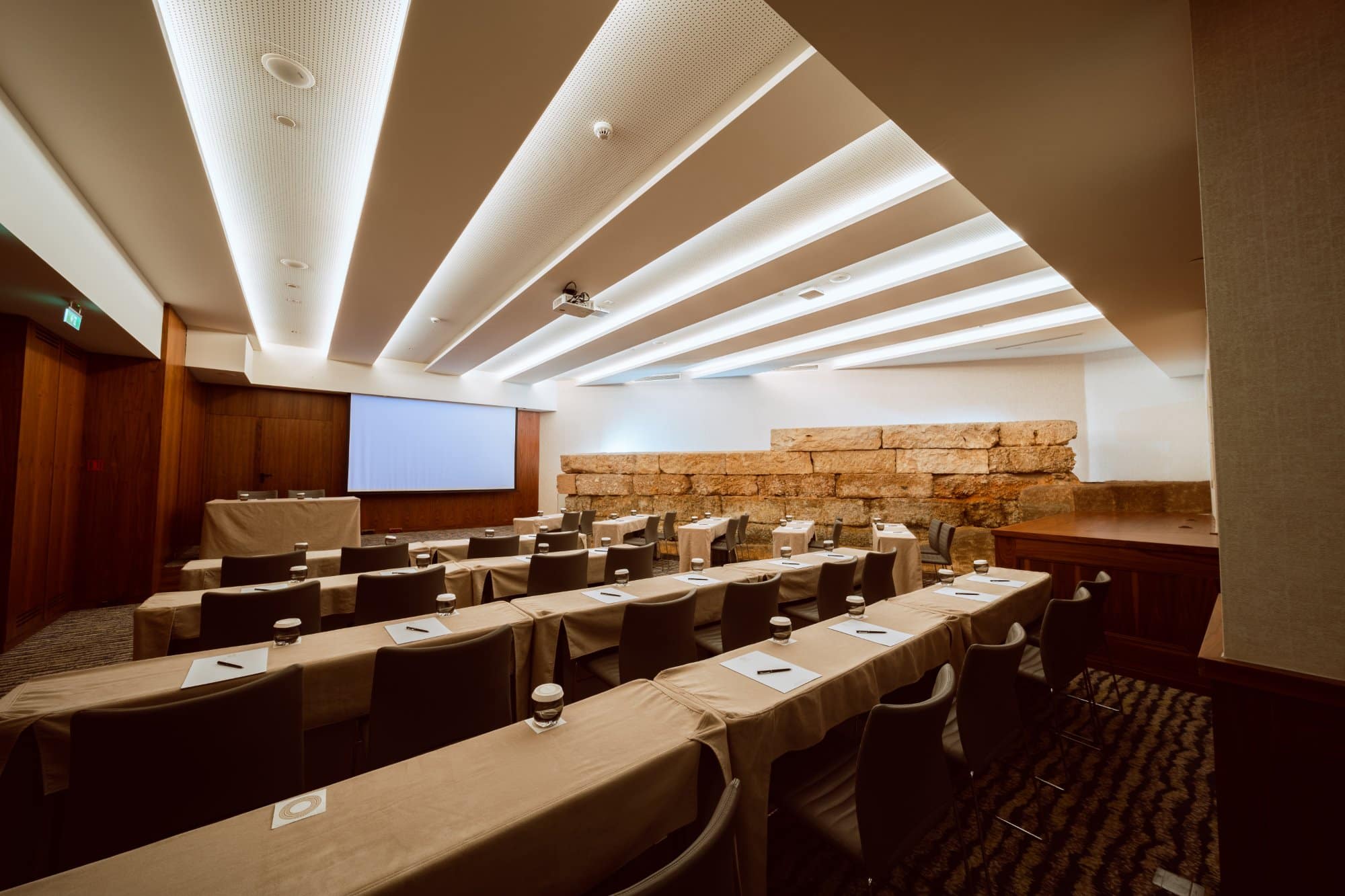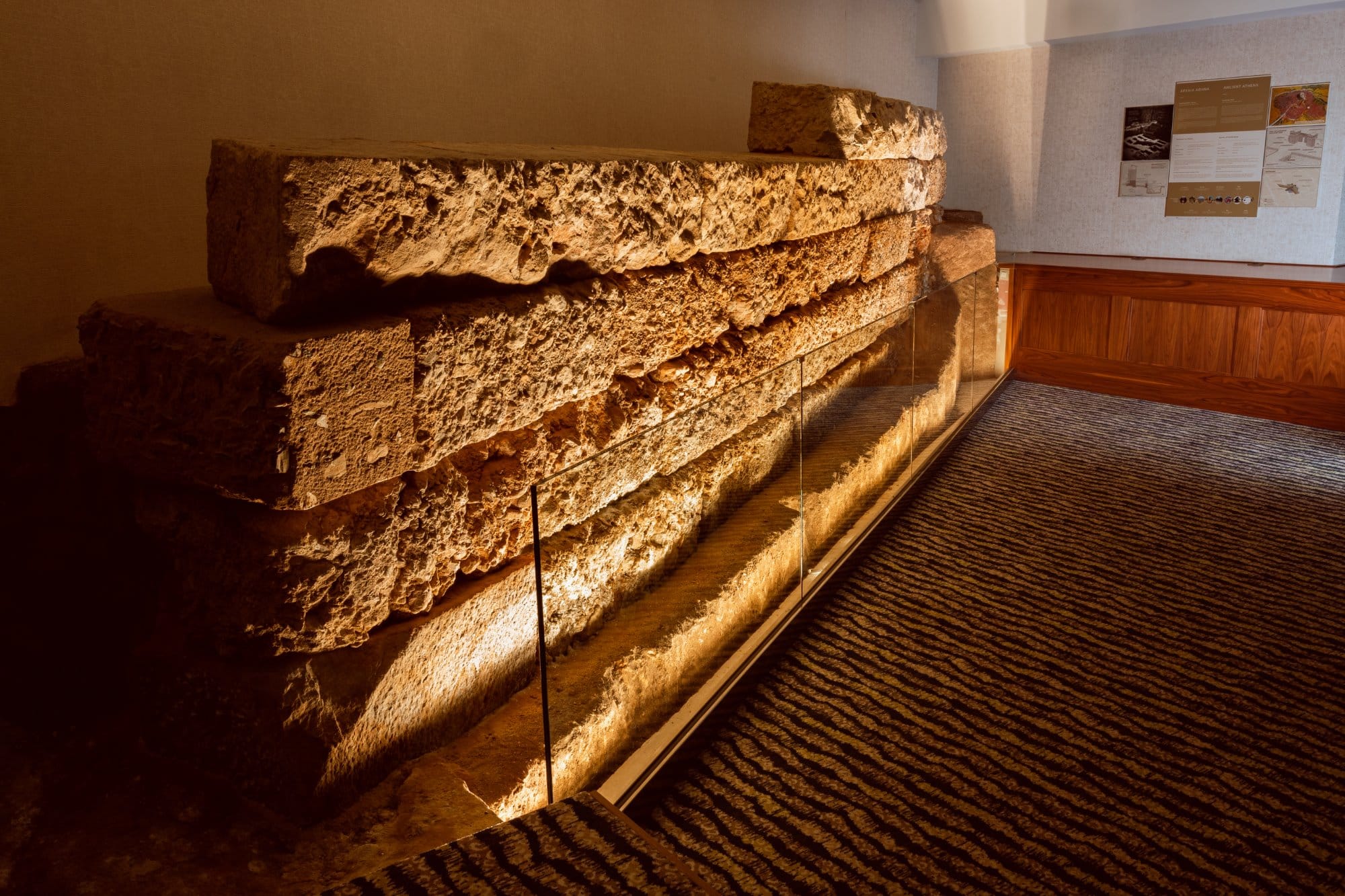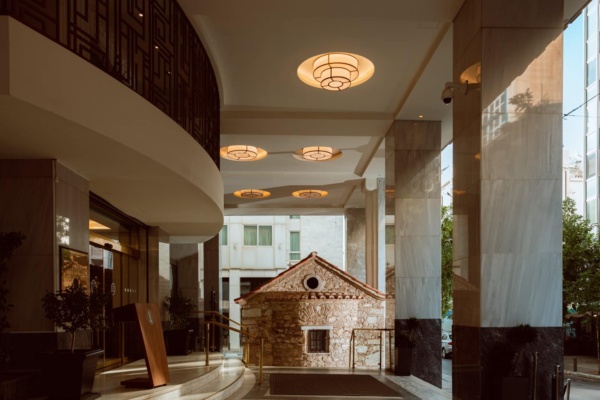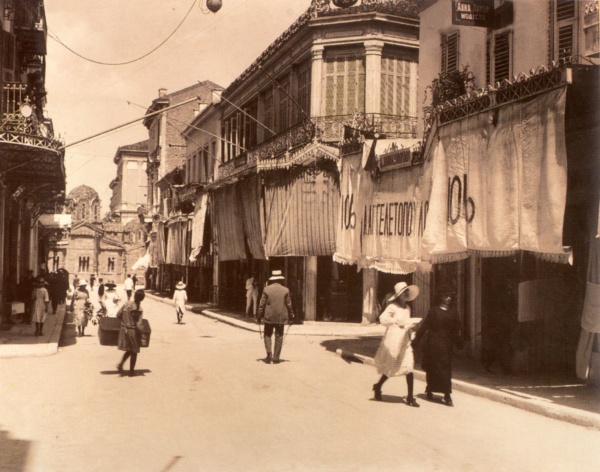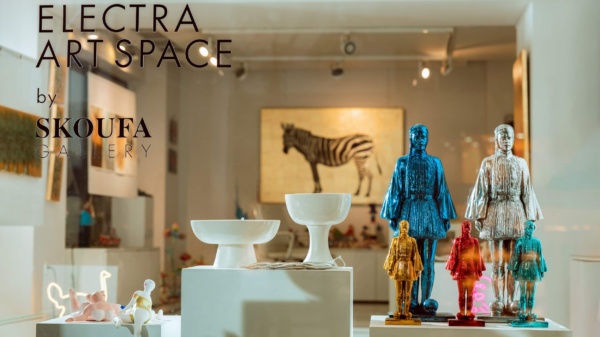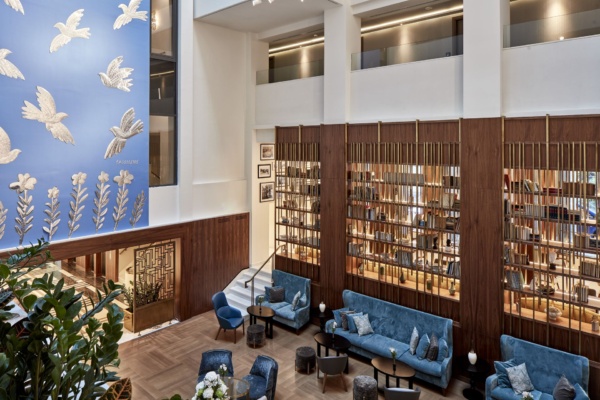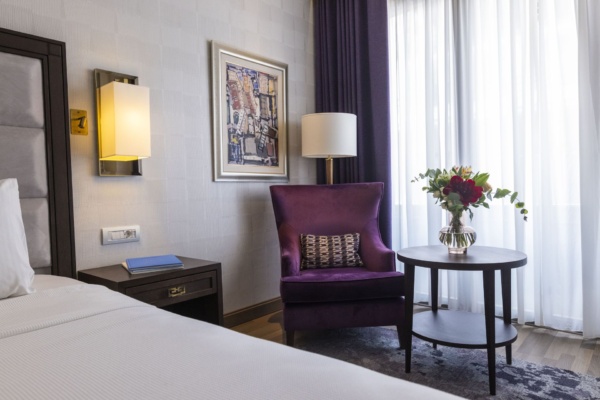Retaining Wall- Themistoclean Wall of Athens 478 BC
Jasmine Meeting Room: We are standing outside ancient Athens and inside the moat that was dug around the city walls. The section of the wall we see in this room, was built to support the road which passed right above it, leading to one of the gates of the ancient city, the Gate of Diochares. The length of the wall, which is 10.70 m. (about 35.10 ft.), reveals the width of the moat. The lower part of this wall was built with conglomerate stones, which are particularly durable against stresses and strains, and not as costly as the limestone used for the upperlayers. The corresponding retaining wall on the other side of the road, is visible through the glass floor of the “Lobby” restaurant, on the lobby level and continues outside the hotel, towards Voulis street.
A section of the pipeline system that supplied the moat with water, is preserved at the spa and the adjacent common area of the hotel.The total length of the wall was roughly 6.4 kilometers. At least 13 gates were built along the wall. Τhe gates were protected by two towers. A narrow space was formed in front of the gates, where the assaulting enemy was in danger of being trapped. Within a timespan of about 1000 years, from 478 BC up to mid-6th century AD, the fortifications of the city were being repaired and enhanced with new additions. How hard was it for the enemy to enter the city? The enemy needed to cross a moat which was 3-11 m. deep and 8-12.5 m. wide, a “proteichisma” (defensive wall located outside the main walls) reaching 5.5 m. in height and a curtain wall reaching 9-10 m. in height.
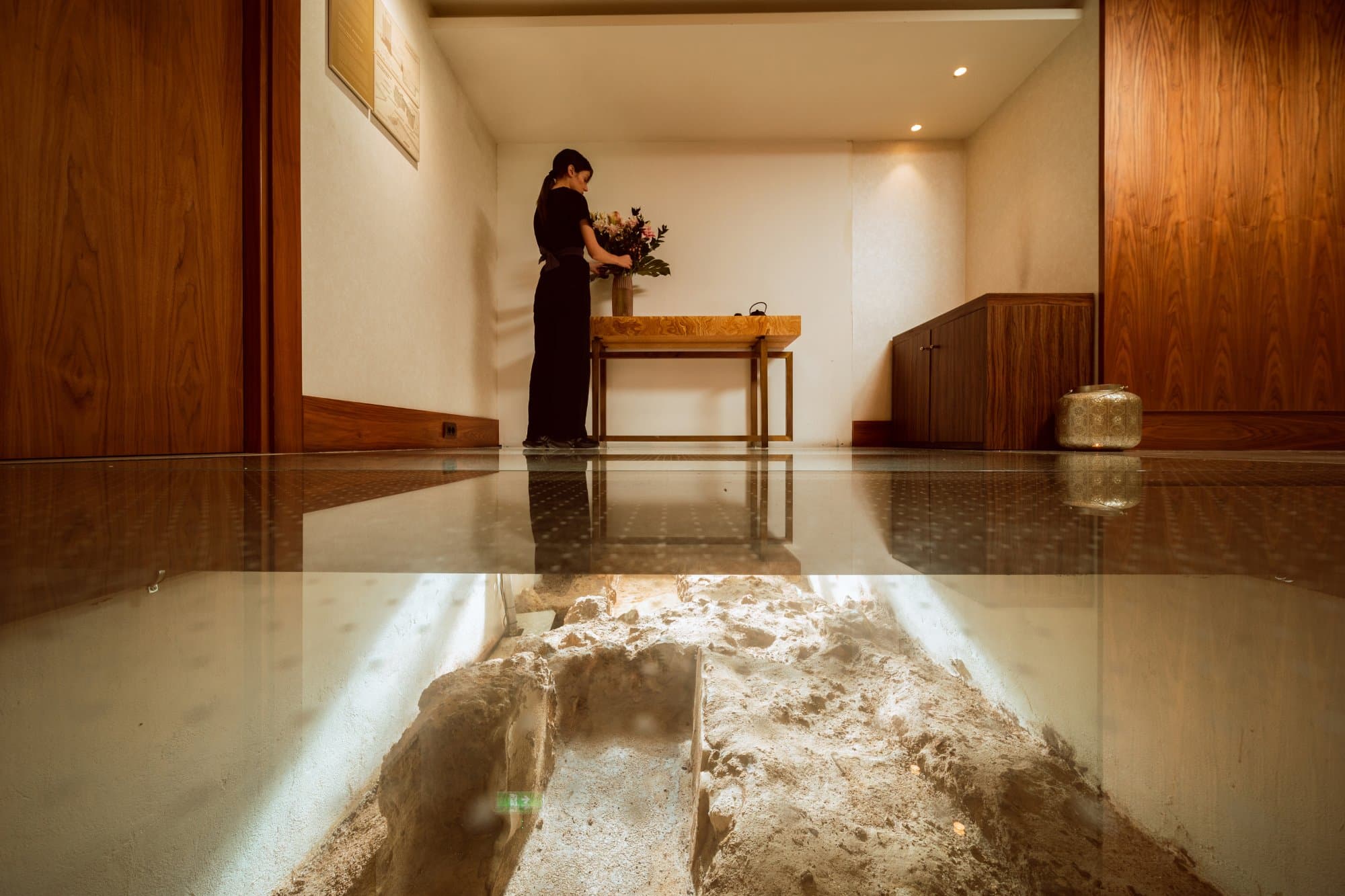
Spa Area: Themistoclean Wall of Athens 478 BC. We are standing outside the walls of ancient Athens, on the edge of the moat. A system of limestone pipelines coated in waterproof plaster is preserved beneath the glass floor. These pipes led the water from Eridanos river and nearby springs into the moat.
The moat and the “proteichisma” constituted the first line of defense of the fortifications, which functioned as a means for preventing mass enemy assaults and keeping the siege engines away from the main walls. In addition to obstructing the enemy, the moat was used to produce mud and is referred to an ancient inscription as “the marsh of Athena”, because it was under the protection of the goddess. The moat continued beneath the WC adjacent to the spa and stopped at the surviving wall in the hotel’s conference room.
Lobby Area: We are standing outside ancient Athens, on the road leading to the Gate of Diochares. From this gate, which is located at the junction of Apollonos and Pentelis streets, began a road leading to the gymnasium of the Lyceum and Aristotle’s School of Philosophy. The wall we see through the glass floor kept the soil of the road from falling into the moat. The corresponding retaining wall on the other side of the road has been excavated and can be seen in the hotel’s conference room. Under the road that passed above these two walls, a system of pipelines, for supplying the moat with water, was discovered. These pipes are no longer visible, but you can see a section of water pipelines beneath the spa and rest room area of the hotel.
Pipeline System of Moat Area & Themistoclean Wall of Athens 478 BC

